Download DewPro® MMY30 - Panametria CZ
Transcript
GE Sensing DewPro® MMY30 General Eastern Trace Moisture Transmitter User’s Manual GE Sensing DewPro® MMY30 General Eastern Trace Moisture Transmitter User’s Manual A40251540A November 2005 DewPro® is a GE General Eastern product. GE General Eastern has joined other GE high-technology sensing businesses under a new name—GE Sensing. November 2005 Warranty Each instrument manufactured by GE Infrastructure Sensing, Inc. is warranted to be free from defects in material and workmanship. Liability under this warranty is limited to restoring the instrument to normal operation or replacing the instrument, at the sole discretion of GE Infrastructure Sensing, Inc. Fuses and batteries are specifically excluded from any liability. This warranty is effective from the date of delivery to the original purchaser. If GE Infrastructure Sensing, Inc. determines that the equipment was defective, the warranty period is: • one year for general electronic failures of the instrument • one year for mechanical failures of the sensor If GE Infrastructure Sensing, Inc. determines that the equipment was damaged by misuse, improper installation, the use of unauthorized replacement parts, or operating conditions outside the guidelines specified by GE Infrastructure Sensing, Inc., the repairs are not covered under this warranty. The warranties set forth herein are exclusive and are in lieu of all other warranties whether statutory, express or implied (including warranties of merchantability and fitness for a particular purpose, and warranties arising from course of dealing or usage or trade). Return Policy If a GE Infrastructure Sensing, Inc. instrument malfunctions within the warranty period, the following procedure must be completed: 1. Notify GE Infrastructure Sensing, Inc., giving full details of the problem, and provide the model number and serial number of the instrument. If the nature of the problem indicates the need for factory service, GE Infrastructure Sensing, Inc. will issue a RETURN AUTHORIZATION number (RA), and shipping instructions for the return of the instrument to a service center will be provided. 2. If GE Infrastructure Sensing, Inc. instructs you to send your instrument to a service center, it must be shipped prepaid to the authorized repair station indicated in the shipping instructions. 3. Upon receipt, GE Infrastructure Sensing, Inc. will evaluate the instrument to determine the cause of the malfunction. Then, one of the following courses of action will then be taken: • If the damage is covered under the terms of the warranty, the instrument will be repaired at no cost to the owner and returned. • If GE Infrastructure Sensing, Inc. determines that the damage is not covered under the terms of the warranty, or if the warranty has expired, an estimate for the cost of the repairs at standard rates will be provided. Upon receipt of the owner’s approval to proceed, the instrument will be repaired and returned. iii November 2005 Table of Contents Chapter 1: General System Information Unpacking and Inspection . . . . . . . . . . . . . . . . . . . . . . . . . . . . . . . . . . . . . . . . . . . . . . . . . . . . . . . . . . . . . . 1-1 Product Structure. . . . . . . . . . . . . . . . . . . . . . . . . . . . . . . . . . . . . . . . . . . . . . . . . . . . . . . . . . . . . . . . . . . 1-1 Introduction. . . . . . . . . . . . . . . . . . . . . . . . . . . . . . . . . . . . . . . . . . . . . . . . . . . . . . . . . . . . . . . . . . . . . . . . . . . . 1-3 Unit Description . . . . . . . . . . . . . . . . . . . . . . . . . . . . . . . . . . . . . . . . . . . . . . . . . . . . . . . . . . . . . . . . . . . . 1-3 Optional Display/ User Interface . . . . . . . . . . . . . . . . . . . . . . . . . . . . . . . . . . . . . . . . . . . . . . . . . . . . . . . . . . . . . . . . . . . . . . 1-3 Theory of Operation . . . . . . . . . . . . . . . . . . . . . . . . . . . . . . . . . . . . . . . . . . . . . . . . . . . . . . . . . . . . . . . . . . . . 1-4 4 to 20 mA Loop . . . . . . . . . . . . . . . . . . . . . . . . . . . . . . . . . . . . . . . . . . . . . . . . . . . . . . . . . . . . . . . . . . . . 1-4 Bypass. . . . . . . . . . . . . . . . . . . . . . . . . . . . . . . . . . . . . . . . . . . . . . . . . . . . . . . . . . . . . . . . . . . . . . . . . . . . . 1-4 Planar Sensor . . . . . . . . . . . . . . . . . . . . . . . . . . . . . . . . . . . . . . . . . . . . . . . . . . . . . . . . . . . . . . . . . . . . . . 1-4 Calibration . . . . . . . . . . . . . . . . . . . . . . . . . . . . . . . . . . . . . . . . . . . . . . . . . . . . . . . . . . . . . . . . . . . . . . . . . 1-4 Dimensions . . . . . . . . . . . . . . . . . . . . . . . . . . . . . . . . . . . . . . . . . . . . . . . . . . . . . . . . . . . . . . . . . . . . . . . . . . . . 1-5 Chapter 2: Installation Guidelines General Hints . . . . . . . . . . . . . . . . . . . . . . . . . . . . . . . . . . . . . . . . . . . . . . . . . . . . . . . . . . . . . . . . . . . . . . . . . . . 2-1 Method I - Orifice at Outlet. . . . . . . . . . . . . . . . . . . . . . . . . . . . . . . . . . . . . . . . . . . . . . . . . . . . . . . . . . . . . . 2-2 Pressure Dewpoint . . . . . . . . . . . . . . . . . . . . . . . . . . . . . . . . . . . . . . . . . . . . . . . . . . . . . . . . . . . . . . . . . 2-2 Air Flow . . . . . . . . . . . . . . . . . . . . . . . . . . . . . . . . . . . . . . . . . . . . . . . . . . . . . . . . . . . . . . . . . . . . . . . . . . . . 2-2 Method II - Orifice at Inlet . . . . . . . . . . . . . . . . . . . . . . . . . . . . . . . . . . . . . . . . . . . . . . . . . . . . . . . . . . . . . . . 2-3 Method III - No Flow Restriction . . . . . . . . . . . . . . . . . . . . . . . . . . . . . . . . . . . . . . . . . . . . . . . . . . . . . . . . . 2-3 Low Pressure Closed Loop . . . . . . . . . . . . . . . . . . . . . . . . . . . . . . . . . . . . . . . . . . . . . . . . . . . . . . . . . . 2-3 Method IV - Bypass Installation . . . . . . . . . . . . . . . . . . . . . . . . . . . . . . . . . . . . . . . . . . . . . . . . . . . . . . . . . 2-4 Remote Installation . . . . . . . . . . . . . . . . . . . . . . . . . . . . . . . . . . . . . . . . . . . . . . . . . . . . . . . . . . . . . . . . . 2-4 Chapter 3: Wiring Instructions General Guidelines. . . . . . . . . . . . . . . . . . . . . . . . . . . . . . . . . . . . . . . . . . . . . . . . . . . . . . . . . . . . . . . . . . . . . . 3-1 System Configuration . . . . . . . . . . . . . . . . . . . . . . . . . . . . . . . . . . . . . . . . . . . . . . . . . . . . . . . . . . . . . . . . . . 3-1 Various Power Supplies . . . . . . . . . . . . . . . . . . . . . . . . . . . . . . . . . . . . . . . . . . . . . . . . . . . . . . . . . . . . . 3-1 Designing the Loop . . . . . . . . . . . . . . . . . . . . . . . . . . . . . . . . . . . . . . . . . . . . . . . . . . . . . . . . . . . . . . . . . 3-1 Mounting in Normal Environments . . . . . . . . . . . . . . . . . . . . . . . . . . . . . . . . . . . . . . . . . . . . . . . . . . . . . . 3-2 Mounting in Environments with Severe Electrical Noise . . . . . . . . . . . . . . . . . . . . . . . . . . . . . . . . . . . 3-2 EMI/RFI . . . . . . . . . . . . . . . . . . . . . . . . . . . . . . . . . . . . . . . . . . . . . . . . . . . . . . . . . . . . . . . . . . . . . . . . . . . . 3-2 Electrical Connection . . . . . . . . . . . . . . . . . . . . . . . . . . . . . . . . . . . . . . . . . . . . . . . . . . . . . . . . . . . . . . . . . . . 3-3 General Instructions . . . . . . . . . . . . . . . . . . . . . . . . . . . . . . . . . . . . . . . . . . . . . . . . . . . . . . . . . . . . . . . . . . . . 3-3 v November 2005 Table of Contents (cont.) Chapter 4: The Optional Display/User Interface (Option G) Installation. . . . . . . . . . . . . . . . . . . . . . . . . . . . . . . . . . . . . . . . . . . . . . . . . . . . . . . . . . . . . . . . . . . . . . . . . . . . . DewPro with Display Assembly . . . . . . . . . . . . . . . . . . . . . . . . . . . . . . . . . . . . . . . . . . . . . . . . . . . . . Replacing the Display . . . . . . . . . . . . . . . . . . . . . . . . . . . . . . . . . . . . . . . . . . . . . . . . . . . . . . . . . . . . . . Description of the DewPro MMY30 Programming Matrix. . . . . . . . . . . . . . . . . . . . . . . . . . . . . . . . . . Matrix Programming . . . . . . . . . . . . . . . . . . . . . . . . . . . . . . . . . . . . . . . . . . . . . . . . . . . . . . . . . . . . . . . . . . . Example . . . . . . . . . . . . . . . . . . . . . . . . . . . . . . . . . . . . . . . . . . . . . . . . . . . . . . . . . . . . . . . . . . . . . . . . . . . Special Functions of the Push Buttons. . . . . . . . . . . . . . . . . . . . . . . . . . . . . . . . . . . . . . . . . . . . . . . . . . . Functions of the Matrix . . . . . . . . . . . . . . . . . . . . . . . . . . . . . . . . . . . . . . . . . . . . . . . . . . . . . . . . . . . . . . . . . Display and Output Mode. . . . . . . . . . . . . . . . . . . . . . . . . . . . . . . . . . . . . . . . . . . . . . . . . . . . . . . . . . . Special Calibration . . . . . . . . . . . . . . . . . . . . . . . . . . . . . . . . . . . . . . . . . . . . . . . . . . . . . . . . . . . . . . . . . Mode of Operation . . . . . . . . . . . . . . . . . . . . . . . . . . . . . . . . . . . . . . . . . . . . . . . . . . . . . . . . . . . . . . . . . 4-1 4-1 4-1 4-2 4-3 4-3 4-3 4-3 4-4 4-5 4-6 Chapter 5: Troubleshooting Problems and Recommended Solutions . . . . . . . . . . . . . . . . . . . . . . . . . . . . . . . . . . . . . . . . . . . . . . . . . 5-1 Removing the Filter. . . . . . . . . . . . . . . . . . . . . . . . . . . . . . . . . . . . . . . . . . . . . . . . . . . . . . . . . . . . . . . . . . . . . 5-1 Chapter 6: Technical Specifications MMY30 Specifications . . . . . . . . . . . . . . . . . . . . . . . . . . . . . . . . . . . . . . . . . . . . . . . . . . . . . . . . . . . . . . . . . . Sensing Element . . . . . . . . . . . . . . . . . . . . . . . . . . . . . . . . . . . . . . . . . . . . . . . . . . . . . . . . . . . . . . . . . . . Measurement Range . . . . . . . . . . . . . . . . . . . . . . . . . . . . . . . . . . . . . . . . . . . . . . . . . . . . . . . . . . . . . . . Recommended Recalibration Cycle . . . . . . . . . . . . . . . . . . . . . . . . . . . . . . . . . . . . . . . . . . . . . . . . . Calibration Accuracy . . . . . . . . . . . . . . . . . . . . . . . . . . . . . . . . . . . . . . . . . . . . . . . . . . . . . . . . . . . . . . . Maximum Sensor Relative Humidity . . . . . . . . . . . . . . . . . . . . . . . . . . . . . . . . . . . . . . . . . . . . . . . . . Operating and Storage Temperature . . . . . . . . . . . . . . . . . . . . . . . . . . . . . . . . . . . . . . . . . . . . . . . . Air Bleed Off at 7 bar (100 psig). . . . . . . . . . . . . . . . . . . . . . . . . . . . . . . . . . . . . . . . . . . . . . . . . . . . . . Maximum Operating Pressure . . . . . . . . . . . . . . . . . . . . . . . . . . . . . . . . . . . . . . . . . . . . . . . . . . . . . . Helium Leak-Rate . . . . . . . . . . . . . . . . . . . . . . . . . . . . . . . . . . . . . . . . . . . . . . . . . . . . . . . . . . . . . . . . . . Output . . . . . . . . . . . . . . . . . . . . . . . . . . . . . . . . . . . . . . . . . . . . . . . . . . . . . . . . . . . . . . . . . . . . . . . . . . . . . Flow Block . . . . . . . . . . . . . . . . . . . . . . . . . . . . . . . . . . . . . . . . . . . . . . . . . . . . . . . . . . . . . . . . . . . . . . . . . Wrench Width for Flow Block . . . . . . . . . . . . . . . . . . . . . . . . . . . . . . . . . . . . . . . . . . . . . . . . . . . . . . . Electronics . . . . . . . . . . . . . . . . . . . . . . . . . . . . . . . . . . . . . . . . . . . . . . . . . . . . . . . . . . . . . . . . . . . . . . . . . Moisture Unit. . . . . . . . . . . . . . . . . . . . . . . . . . . . . . . . . . . . . . . . . . . . . . . . . . . . . . . . . . . . . . . . . . . . . . . Power Supply . . . . . . . . . . . . . . . . . . . . . . . . . . . . . . . . . . . . . . . . . . . . . . . . . . . . . . . . . . . . . . . . . . . . . . Protection. . . . . . . . . . . . . . . . . . . . . . . . . . . . . . . . . . . . . . . . . . . . . . . . . . . . . . . . . . . . . . . . . . . . . . . . . . Weight. . . . . . . . . . . . . . . . . . . . . . . . . . . . . . . . . . . . . . . . . . . . . . . . . . . . . . . . . . . . . . . . . . . . . . . . . . . . . European Compliance . . . . . . . . . . . . . . . . . . . . . . . . . . . . . . . . . . . . . . . . . . . . . . . . . . . . . . . . . . . . . . Optional Onboard Display with User Interface . . . . . . . . . . . . . . . . . . . . . . . . . . . . . . . . . . . . . . . . . . . EMI/RFI . . . . . . . . . . . . . . . . . . . . . . . . . . . . . . . . . . . . . . . . . . . . . . . . . . . . . . . . . . . . . . . . . . . . . . . . . . . . . . . . EMC . . . . . . . . . . . . . . . . . . . . . . . . . . . . . . . . . . . . . . . . . . . . . . . . . . . . . . . . . . . . . . . . . . . . . . . . . . . . . . . . . . . Optional Certifications/Approvals . . . . . . . . . . . . . . . . . . . . . . . . . . . . . . . . . . . . . . . . . . . . . . . . . . . . . . . Appendix A: User Interface Matrix Input vi 6-1 6-1 6-1 6-1 6-1 6-1 6-1 6-1 6-1 6-1 6-1 6-1 6-1 6-1 6-1 6-1 6-1 6-1 6-1 6-2 6-2 6-2 6-2 Chapter 1 General System Information Unpacking and Inspection . . . . . . . . . . . . . . . . . . . . . . . . . . . . . . . . . . . . . . . 1-1 Introduction. . . . . . . . . . . . . . . . . . . . . . . . . . . . . . . . . . . . . . . . . . . . . . . . . . . . 1-3 Theory of Operation . . . . . . . . . . . . . . . . . . . . . . . . . . . . . . . . . . . . . . . . . . . . 1-4 Dimensions . . . . . . . . . . . . . . . . . . . . . . . . . . . . . . . . . . . . . . . . . . . . . . . . . . . . 1-5 November 2005 Unpacking and Inspection Upon receipt of the DewPro MMY30, examine the shipping carton for broken or open packing, distortion, or any other evidence of mishandling. If inspection indicates damage to the unit or any of its components, notify the carrier (within 15 days of delivery) and request an inspection. Move the carton to a clean work area and unpack. The carton you receive should contain: • DewPro MMY30 • Installation and Operation Manual • Calibration Certificate Compare the last five numbers or letters on the model number (on the product label shown in Figure 1-1 below) with the product structure (see below) to ensure you have received everything you ordered. Figure 1-1: DewPro MMY30 Product Structure Certification/Approvals: R Standard (not certified) A FM IS C1. I, II, III: Div. 1; Grps.A-G B FM XP Cl.1, Div. 1; Grps. A-D C FM Cl.1, Div. 2, Grps. A-D Cl. II, III, Div. 1, Grps. E-G S Other Process Connection: 1 ½” MNPT (1/4” tube fitting if B, C or D is selected below) 2 G ½ (6 mm tube fitting if B, C or D is selected below) S Other General System Information 1-1 November 2005 Product Structure (cont.) Orifice Configuration: A Inlet: None; Outlet: Orifice, with ¼” FNPT B Inlet: None; Outlet: Orifice, with (6 mm) ¼” tube fitting C Inlet: None; Outlet: None, with (6 mm) ¼” tube fitting D Inlet: Orifice; Outlet: None, with (6 mm) ¼” tube fitting S Other Enclosure Conduit: 1 M20 X 1.5 F with cable gland 2 M20 X 1.5 F with 1/2” FNPT adaptor S Other Output Configuration/Dewpoint Range: A Td -90 °C to +10 °C (-130 °F to +50 °F), no display, error 22 mA B Td -90 °C to +10 °C (-130 °F to +50 °F), no display, error Hold C Td -90 °C to +10 °C (- 130 °F to +50 °F), no display, error 3.6 mA D 0-100 ppmv 1 bar, no display, error 22 mA E 0-100 ppmv 1 bar, no display, error Hold F 0-100 ppmv 1 bar, no display, error 3.6 mA G With integral display/user interface H With integral display/user interface, includes moisture units Lbs/MMSCF, natural gas S Other 1-2 General System Information November 2005 Introduction Unit Description The DewPro MMY30 trace moisture transmitter (shown in Figure 1-2 below) is a loop-powered dewpoint measuring device. The transmitter includes a sensor element, a flow chamber, a weatherproof enclosure, microprocessor electronics, and assorted fittings, all in a compact assembly. In most cases, either the inlet or outlet port includes an orifice to regulate the flow. The placement of this orifice determines whether the dew point measurement is done at process (line) pressure (outlet orifice), or at atmospheric pressure (inlet orifice). A 2 micron sintered inlet filter prevents particles from entering the device. Optional Display/ User Interface The optional display/user interface feature allows the DewPro to be configured to the user's specifications. See Chapter 4 for more information. Figure 1-2: DewPro MMY30 Transmitter General System Information 1-3 November 2005 Theory of Operation 4 to 20 mA Loop The DewPro MMY30 microprocessor controlled electronics operate with a DC voltage supply from 12 to 28 VDC. At the nominal 24 V DC supply, the maximum loop resistance is 600 Ohm. The signal is represented by the 4 to 20 mA loop current and is directly proportional to the dewpoint range in °C or °F. In the standard range, 4 mA corresponds to -90°C (-130°F) and 20 mA to +10°C (+50°F) dewpoint temperature.The optional unit of measure is ppmv in the standard range 0-100 ppmv. Bypass In dryer applications, the moisture sensor performs best when mounted in a bypass. The built-in bypass of the DewPro eliminates costly hardware associated with traditional sampling methods. The DewPro installs simply into the process with its G ½ or ½” MNPT threaded connection. Planar Sensor The heart of the MMY30 is the planar sensor element. It incorporates a superior aluminum oxide sensor that provides longer calibration stability, excellent corrosion resistance, and improved speed of response. The sensor, mounted on a ceramic substrate, also has a reduced temperature coefficient. Calibration Each DewPro is factory calibrated against precise NIST certified moisture references and has an accuracy of ±2°C dewpoint at 25°C temperature. For field validation, GE Sensing offers a unique validation device. The MMY245 field validator connects to the DewPro on site and offers a one-point or two-point correction. 1-4 General System Information November 2005 Dimensions Choose a mounting location which allows enough clearance for the use of tools and for connection of the field validator. Figure 1-3 shows the dimensions of the standard DewPro, and Figure 1-4 shows the DewPro with the optional display/user interface. Figure 1-3: Standard DewPro Dimensions Figure 1-4: Dimensions for DewPro with Optional Display/ User Interface General System Information 1-5 Chapter 2 Installation Guidelines General Hints . . . . . . . . . . . . . . . . . . . . . . . . . . . . . . . . . . . . . . . . . . . . . . . . . . . 2-1 Method I - Orifice at Outlet . . . . . . . . . . . . . . . . . . . . . . . . . . . . . . . . . . . . . . 2-2 Method II - Orifice at Inlet . . . . . . . . . . . . . . . . . . . . . . . . . . . . . . . . . . . . . . . 2-3 Method III - No Flow Restriction . . . . . . . . . . . . . . . . . . . . . . . . . . . . . . . . . . 2-3 Method IV - Bypass Installation . . . . . . . . . . . . . . . . . . . . . . . . . . . . . . . . . . 2-4 November 2005 General Hints Caution! Before installation, please read all instructions. The DewPro is designed to be mounted to pressurized systems. Take all necessary precautions when mounting or removing the DewPro. • Mount the DewPro vertically whenever possible to prevent particles or condensation from entering the bypass. • Mount the DewPro after a shut-off valve to depressurize the DewPro when removing it from the process pipe in case of maintenance or field compensation. Caution! Do not over-tighten! The outlet fitting is connected to the bypass block with a G 1/4 straight thread (with gasket) which will seal if the fitting is simply hand-tightened. When connecting an external device, counter the fitting with a second wrench when tightening. If the inlet is equipped with a G 1/2 straight thread and gasket, the seal is obtained by simply hand-tightening the DewPro. Caution! If you are installing the DewPro into a pressurized system (up to 10 bar), depressurize the system before installing or removing the sensor. Pressurized systems require a stainless steel compression fitting. Installation Guidelines 2-1 November 2005 Method I - Orifice at Outlet Figure 2-1 below illustrates installation at the orifice at the outlet. Figure 2-1: DewPro Installation at Orifice at Outlet Pressure Dewpoint Air dryers producing general instrument air are typically specified with a pressure dewpoint rating. The majority of dryers operate in a dewpoint range between -40°C and -75°C (-40°F and -100°F). A pressure of 7 to 8 bar (= 100 psig) is very common. Air Flow The DewPro is designed to measure the pressure dewpoint. By restricting the flow at the outlet of the integral bypass with an orifice, the sensor monitors the dewpoint at process pressure. The bleed-off air to the atmosphere at 7 to 8 bar (100 psig), is approximately 70 cc/ min. (28 L/h or =1.0 SCFH cfh). For smaller sized dryers of 3m3/ min.(=100 cfm) the air loss is only 0.002% of the air production and is negligible. Despite the very low flow rate through the bypass as shown, the air sample in the DewPro bypass chamber is refreshed every second due to the small volume design. As a result, the sensor sees changes in moisture instantaneously. Due to the low flow rate, the flow velocity is also very low at <0.01 m/sec. (=34 m/h).The low flow velocity prevents the inlet filter from clogging since there is not enough kinetic energy to push dust particles into the filter. 2-2 Installation Guidelines November 2005 Method II - Orifice at Inlet Figure 2-2 below shows installation at the orifice at the inlet. Figure 2-2: DewPro Installation at Orifice at Inlet Method III - No Flow Restriction Figure 2-3 below illustrates an installation with no flow restrictions. Figure 2-3: DewPro Installation with No Flow Restriction Low Pressure Closed Loop Installation Guidelines Closed loop drying systems, which are very common with hopper dryers in the plastics industry, operate at very low pressures of a few inches of water. The air passing through the DewPro bypass is fed back to the main stream after a pressure drop in the main line. In this configuration, the DewPro bypass has no flow restriction at the inlet and outlet.The outlet is equipped with a 6 mm (l/4”) tube fitting to allow simple connection of the loop tubing. 2-3 November 2005 Method IV - Bypass Installation Figure 2-4: Remote Wall Mount Bypass Remote Installation In some cases there may not be enough room to install the DewPro directly to the process pipe. The tube connection at the inlet allows mounting the DewPro at a remote location. The functions of Methods I-III can be selected.The DewPro can be mounted on a wall or a plate using the optional wall/pipe mounting bracket, as shown in Figure 2-5 below. Panel Mounting 6.50 in. (165 mm) 4.45 in. (113 mm) Vertical Pipe Mounting 4.45 in. (113 mm) 2.76 in. (70 mm) 3.23 in. (82 mm) 0.79 in. (20 mm) 4.45 in. (113 mm) Horizontal Pipe Mounting 2.76 in. (70 mm) Horizontal Pipe Mounting Figure 2-5: DewPro with Various Mounting Brackets 2-4 Installation Guidelines Chapter 3 Wiring Instructions General Guidelines . . . . . . . . . . . . . . . . . . . . . . . . . . . . . . . . . . . . . . . . . . . . . . 3-1 System Configuration . . . . . . . . . . . . . . . . . . . . . . . . . . . . . . . . . . . . . . . . . . . 3-1 Mounting in Normal Environments . . . . . . . . . . . . . . . . . . . . . . . . . . . . . . . 3-2 Mounting in Environments with Severe Electrical Noise . . . . . . . . . . . . . 3-2 Electrical Connection . . . . . . . . . . . . . . . . . . . . . . . . . . . . . . . . . . . . . . . . . . . 3-3 General Instructions . . . . . . . . . . . . . . . . . . . . . . . . . . . . . . . . . . . . . . . . . . . . 3-3 November 2005 General Guidelines Caution! The DewPro system contains electronic components that are susceptible to damage by static electricity. Proper handling procedures must be observed during the removal, installation, or other handling of internal boards or devices. Note: If the DewPro is equipped with an optional display/user interface, please refer to Chapter 4. System Configuration Various Power Supplies Figure 3-1 below illustrates various power supplies and displays for use with the DewPro MMY30. Figure 3-1: Power Supplies/Displays for MMY30 Designing the Loop When selecting a power supply, please note that the voltage at the +/terminal of the DewPro should not fall below 12 VDC. The maximum loop resistance is an important measure for selection of the supply voltage. Each device connected to the loop causes a voltage drop. For instance, using a loop-powered display with an input impedance of 50 Ω will cause a voltage drop of 1 VDC at 20 mA, using Ohm's law. Connecting the loop to a PLC will cause a voltage drop across the input. When designing your loop, add up all voltage losses across the devices connected to the loop and add 12 V. The sum will be the minimum supply voltage required from the power supply. Calculate with a 20% safety factor. Wiring Instructions 3-1 November 2005 Mounting in Normal Environments A standard two-wire, stranded cable (shown in Figure 3-2 below) can be used to interconnect the DewPro with the power source. Two Figure 3-2: DewPro Interconnections Mounting in Environments with Severe Electrical Noise EMI/RFI The DewPro MMY30 meets the EMC requirements of IEC 61326 for equipment used in industrial locations. The MMY30 passed all tests to the standards IEC 61000-4- to the performance criterion A. Test details can be found in Chapter 6, Specifications. Figure 3-3: DewPro Mounted in Environment with Severe Electrical Noise 3-2 Wiring Instructions November 2005 Electrical Connection Figure 3-4 below illustrates electrical connections for the DewPro MMY30. 28 Figure 3-4: Electrical Connections General Instructions 1. Unscrew the cap on the terminal side of the unit. 2. Loosen the cable gland located on the side of the unit. 3. Feed the cable through the conduit opening. Note: Use a standard signal cable size. 4. Retighten the metal cable gland to meet IP 67 and to relieve any stress on the wire. 5. Verify that a voltage between 12 and 28 VDC is across the terminals marked + and -. Note: This is the voltage that appears across the DewPro terminals, not necessarily the power supply voltage due to voltage loss in wire length, displays, indicators, etc. 6. In order to meet EMI/RFI immunity, a two-wire shielded cable with a common foil shield layer is being used to power the MMY 30. Removing the insulation by 3” allows users to pull back the foil, clamping it in between the metal cable gland. The ground wire must be connected to the internal grounding screw. Wiring Instructions 3-3 Chapter 4 The Optional Display/User Interface (Option G) Installation. . . . . . . . . . . . . . . . . . . . . . . . . . . . . . . . . . . . . . . . . . . . . . . . . . . . . 4-1 Description of the DewPro MMY30 Programming Matrix . . . . . . . . . . . . 4-2 Special Functions of the Push Buttons . . . . . . . . . . . . . . . . . . . . . . . . . . . . 4-3 Functions of the Matrix . . . . . . . . . . . . . . . . . . . . . . . . . . . . . . . . . . . . . . . . . . 4-3 November 2005 Installation If the DewPro is equipped with an optional display/user interface, follow the procedure below to access the buttons. Figure 4-1: DewPro with Display DewPro with Display Assembly 1. Unscrew and remove the protective lid from the top of the DewPro (as shown in Figure 4-1 above), exposing the display module below. The buttons V, H, + and - are now accessible. Replacing the Display 2. The display unit snaps onto the printed circuit board, resting on four posts. When removing the display, push one post to the outside, using a small screwdriver, and pull the display out. 3. Then unplug the display cable. The Optional Display/User Interface (Option G) 4-1 November 2005 Description of the DewPro MMY30 Programming Matrix In the DewPro trace moisture transmitter with display option, a matrix-style input is used for programming the unit of measure, measuring range, error status of output, and output adjustment. Each option is assigned coordinates on the 10 by 10 matrix, specified with V (vertical), H (horizontal) and a number for each. You select the desired option by entering the matrix position.The following sections describe the features and usage of the various matrix locations as they apply to the MMY30. Figure 4-2: The MMY30 Optional Display The display of the DewPro MMY30 continuously shows the current matrix location using the vertical (V) and horizontal (H) coordinates to designate the row and column, respectively. The bar graph represents the output current in an analog fashion (refer to Figure 4-2 above). See Appendix A for an enlarged overview of the matrix with all possible options, shown in Table 4-1 below. Table 4-1: Matrix Input for Programming MMY30 H0 H1 V0 Display Moisture Select Value Devices Unit 0=°C 1=°F 35=ppmv V1 Dewpoint °C 4 mA Dewpoint °C 20 mA H2 H3 H4 H5 H6 H7 H8 H9 Loop #1 at Fault 0=-10% 1=110% 2=Hold ppmv 20 mA V2 V3 Output Output D/A Cal 4 mA D/A Cal 20 mA Pressure ppmv Constant (bar) V4 V5 V6 V7 V8 V9 4-2 Input Locking 50 = Unlock Current Error Code Previous Error Code Device ID Software Version Set to Default Values 50 = Set Default Reset Device 50 = Reset After Calibration The Optional Display/User Interface (Option G) November 2005 Matrix Programming Movement through the matrix is accomplished by using the “V” and “H” buttons to move to another row or column, as shown in the example below. At any location where a value may be changed by the user, the desired value is programmed using the “+” and “-” buttons. The digit to be changed flashes. Example To set the dew point value to -10°C for 20 mA (V1 H1 on matrix): 1. Press the V key until the display shows V1. 2. Press the H key until the display shows H1. 3. Use the + or - key to change the numeric value to -10. 4. Proceed to any part of the matrix. Special Functions of the Push Buttons 1. Reset to “Normal” Display: Pressing the “V” and “H” buttons simultaneously returns the user to VH 00 (normal display). 2. Display Only: Note that five (5) matrix locations are for display only and may not be changed by the user (refer to Table 4-1 on the previous page or Appendix A). The “display only” fields are as follows: • VH 00 = normal display (in dewpoint °C) • VH 90 = during a system alarm, displays the error code for the fault encountered • VH 91 = during normal operation, the previous error code is displayed for reference • VH 92 = displays the factory issued identification number • VH 93 = displays the factory issued reference number designating the device type and software version 3. Default Values: A default value is assigned to each programmable matrix field. The values are present after a reset to factory programmed data has been executed (see VH 95). 4. Changing Values: When unlocked (VH89=50), values in certain matrix locations can be changed using the + and - buttons. The changeable digit flashes. Functions of the Matrix Note: Refer to Table 4-1 on page 4-2 or Appendix A. This section describes the functions available to the user through the matrix, grouped by common function areas. The function is accessed by positioning to the specified location within the matrix. The Optional Display/User Interface (Option G) 4-3 November 2005 Display and Output Mode 1. Dew Point Display Location in Matrix VH 00 Description of Function This is the normal display of the transmitter when in operation. The dewpoint is shown in °C or °F, or ppmv as selected under VH 01. 2. Selecting the Unit of Measure Location in Matrix VH 01 Description of Function Selects units to be displayed. Changing from °C to °F does not change the current loop. Changing from dewpoint to ppmv does change the current loop. Note: When switching to ppmv, the display may indicate an error “3” if the dewpoint reading is above -20°C. (For example, the DewPro is exposed to ambient air.) 3. Loop at Fault Location in Matrix VH 07 Description of Function If any fault malfunction occurs, the loop can be set to either “-10%” (=3.6 mA), to “110%” (=22 mA) or “Hold” (stays at last valid value). 4. Selecting the Analog Output Offset (4 mA) Location in Matrix Description of Function VH 10 The dewpoint value corresponding to the analog output offset (4 mA) is entered here. Default: -90°C Caution! Ensure the dewpoint value in VH10 is always at least 20°C below the value assigned to 20 mA. 4-4 The Optional Display/User Interface (Option G) November 2005 Display and Output Mode (cont.) 5. Selecting the Analog Output Span (20 mA) Location in Matrix Description of Function VH 11 The dewpoint value corresponding to the analog output span (20 mA) is entered here. Default: +10°C. Caution! Ensure the value in VH11 is always at least 20 °C above the value assigned to 4 mA. 6. Setting the Span Value for the ppmv Range Location in Matrix VH 12 Special Calibration Description of Function Selection of this field sets the span value for the ppm-v range. Default: 100. Note: The offset is always 0 ppmv. Do not exceed 1000 ppmv. 7. Adjusting the Pressure Constant. Location in Matrix VH 30 The Optional Display/User Interface (Option G) Description of Function The process pressure constant is entered in bar (absolute), which is used to calculate ppmv. The moisture unit ppmv is the ratio of water vapor pressure to the total process pressure and is, therefore, independent of the process pressure. The reason is that when compressing a gas (process pressure) all partial pressures increase by the same factor (Dalton's Law). The gold/aluminum oxide sensor is selective to water vapor pressure monitoring a higher vapor pressure when the total pressure (process pressure) increases. The formula utilized by the analyzer refers to the total pressure of 1 bar. An elevated pressure of the process has to be corrected by programming the actual process pressure in bar absolute to the matrix field VH 30. The system should be designed to maintain a constant pressure, for instance, by using a pressure regulator in a bypass system. Default: 1 bar (absolute) 4-5 November 2005 Special Calibration (cont.) 8. Adjusting the Current Loop Hardware at 4 mA Location in Matrix VH 38 Description of Function By connecting an ammeter in the loop, the correct current (4 mA) can be adjusted by increasing or decreasing the displayed digits. Note: If the matrix input is locked (VH89), the calibration values are displayed but the current output is unaffected. To enable adjustments, VH89 has to be unlocked by entering “50” into this field. 9. Adjusting the Current Loop Hardware at 20 mA Location in Matrix VH 39 Mode of Operation Selection of this field assists during calibration, generating a nominal 20 mA signal, but the actual value must be 21.92 mA, an over range to a dewpoint of 22°C. By connecting an ammeter in the loop, the correct current (21.92 mA) can be adjusted by increasing or decreasing the displayed digits. Note: If the matrix input is locked (VH89), the calibration values are displayed but the current output is unaffected. To enable adjustments, VH89 has to be unlocked by entering “50” into this field. 10. Input Locking. Location in Matrix VH 89 4-6 Description of Function Description of Function Any number other than “50” will lock the instrument settings from inadvertent or unauthorized changes. (The instrument is only unlocked at “50.”) The Optional Display/User Interface (Option G) November 2005 Mode of Operation (cont.) 11. Displaying the Present Error Code Location in Matrix Description of Function VH 90 In the event of a system fault, this field displays the diagnostic error code for the fault encountered. Error Code Description 0 No error. 1 Dewpoint underrange. The current output has fallen below the 4.00 mA point. 2 Dewpoint overrange. The current output has exceeded the 21.92 mA level. 3 The instrument is no longer reading between -90 and -20°C dewpoint while in ppmv mode and has fallen off of the internal vapor pressure table. 4 ppmv overrange. The current output has exceeded the 20 mA level. Re-range the ppmv upper scaling limit in V1H2 to keep this error from occurring. 5 Sensor is shorted. 6 Sensor is open. 12. Displaying the Previous Error Code Location in Matrix VH 91 Description of Function When a system fault condition is cleared, the value of the error code is stored in this location. That is, during normal operation, the most recent error code is displayed for reference. 13. Instrumentation Identification Number Location in Matrix VH 92 The Optional Display/User Interface (Option G) Description of Function The instrumentation identification number should always read “100.” 4-7 November 2005 Mode of Operation (cont.) 14. Identification Field. Location in Matrix VH 93 Description of Function This field indicates the software version (i.e., version 2.02 or higher). 15. Set to Default Values. Location in Matrix VH 94 Description of Function This field sets all factory defaults. Note: Anything that has been calibrated will not be reset. 16. Resetting the Device. Location in Matrix VH 99 4-8 Description of Function The device is reset in this field by entering 50. Note: Reset the device only after field calibration, using the MMY 245 validator. The Optional Display/User Interface (Option G) Chapter 5 Troubleshooting Problems and Recommended Solutions . . . . . . . . . . . . . . . . . . . . . . . . . . . 5-1 Removing the Filter . . . . . . . . . . . . . . . . . . . . . . . . . . . . . . . . . . . . . . . . . . . . . 5-1 November 2005 Problems and Recommended Solutions Problem: The loop current is outside the range of 4-20 mA, as shown on display or current meter. In some cases, 22 mA can be ordered as the fault current. Solution: The process dewpoint is out of range. If the dewpoint is above +10°C (+50°F), the current will go to 22 mA. Apply dry air for 20 minutes. If the dewpoint doesn't decrease, consult the factory. If the dewpoint is below -90°C (-130°F), the current will go below 4 mA and then to 22 mA as fault current. Expose the DewPro to ambient air for several minutes. If the error remains, the cause may be a defective sensor assembly or an electronics malfunction. Consult the factory. Removing the Filter Problem: There is no current. Solution: Check the voltage and polarity across +/- terminals with a DC voltmeter. If the voltage is within 12-28 VDC, consult the factory. Problem: The response time is very slow. Solution: Verify the flow with an air flowmeter. If the orifice is at the outlet of a 7 to 8 bar (=100 psig) process pressure, the air flow should indicate 20 to 30 1/h (500 cc/min., 1 cfh). If the flow is dramatically lower, the inlet filter may be clogged. Remove the 2 micron filter and clean it with a solvent or replace it. Figure 5-1 below shows a breakdown of filter parts for removal. Figure 5-1: Filter Parts Troubleshooting 5-1 Chapter 6 Technical Specifications MMY30 Specifications . . . . . . . . . . . . . . . . . . . . . . . . . . . . . . . . . . . . . . . . . . . 6-1 Optional Onboard Display with User Interface . . . . . . . . . . . . . . . . . . . . . 6-2 November 2005 MMY30 Specifications Sensing Element Planar sensor, aluminum oxide capacitance principle Measurement Range - 90°C to +10°C (-130°F to +50°F) dew point temperature. 0 to 10, 0 to 100, 0 to 1000 ppmv (fully adjustable with integral display) Recommended Recalibration Cycle 12 months, depending on the application Calibration Accuracy ±2°C (±3.6°F) dew point at 25°C (77°F) Maximum Sensor Relative Humidity 50% at dewpoint temperatures >0°C (32 °F) Operating and Storage Temperature -40°C to +50°C (-40°F to +122°F) Air Bleed Off at 7 bar (100 psig) Approximately 28 sl/h (1 SCFH) Maximum Operating Pressure 31 bar, 3.1 MPa (450 psig) Helium Leak-Rate <10-6 mbar l/s Output 4 to 20 mA; 16 µA resolution Flow Block 316 stainless steel with G ½ thread (DIN ISO 228) or ½” (12.7 mm) MNPT thread Wrench Width for Flow Block 42 mm (1 5/8”) Electronics Microcontroller operated Moisture Unit Dew point temperature in °C or °F, ppmv Power Supply 24 VDC nominal, 12 to 28 VDC range Protection Type 4X (IP 67) Weight 1.5 kg (3.2 lbs) European Compliance Complies with EMC Directive 89/336/EEC and PED 97/23/EC for DN<25 Technical Specifications 6-1 November 2005 Optional Onboard Display with User Interface EMI/RFI The optional onboard display with user interface uses a matrix configurator for: • range changes • unit of measure selection • current loop adjustment • error diagnostics • current value selection for fault conditions • and entering a pressure constant for ppmv. Performance Criterion A: 1. Conducted Emission Test as per CISPR 11 Class A, 2004 2. Radiated Emission Test as per CISPR 11 Class A, 2004 3. Radiated Susceptibility Test as per IEC 61000-4-3, 2002 4. Electrostatic Discharge Test as per IEC 61000-4-2, 2001 5. Electrical Fast Transient Test as per IEC 61000-4-4, 2004 6. High Energy Surge Immunity Test as per IEC 61000-4-5, 2001 7. Power Frequency Magnetic Field Test as per IEC 61000-4-8, 2001 EMC IEC 61326, Industrial Locations Optional Certifications/ Approvals FM IS Cl. I, II, III, Div. 1, Grps. A-G, T5 FM XP-IS Cl. I, Div. 1, Grps. A-D, T5 FM NI Cl. I, Div. 2, Grps. A-D, T4A DIP Cl. II, III, Div. 1, Grps. E-G, T5 ATEX II 3G EEx nA IIC T4 6-2 Technical Specifications Appendix A User Interface Matrix Input November 2005 Table A-1: Matrix Input for Programming MMY30 H0 H1 V0 Display Moisture Value Select Devices Unit 0=°C 1=°F 35=ppmv V1 Dewpoint °C 4 mA Dewpoint °C 20 mA H2 H3 H4 H5 H6 H7 H8 H9 Loop #1 at Fault 0=-10% 1=110% 2=Hold ppmv 20 mA V2 V3 Output Output D/A Cal 4 mA D/A Cal 20 mA Pressure ppmv Constant (bar) V4 V5 V6 V7 V8 V9 Current Error Code User Interface Matrix Input Previous Error Device ID Code Software Version Set to Default Values 50 = Set Default Reset Device 50 = Reset After Calibration A-1 GE Industrial Sensing DECLARATION OF CONFORMITY GE Industrial, Sensing 1100 Technology Park Drive Billerica, MA 01821 USA We, declare under our sole responsibility that the DewPro® MMR30 Moisture Transmitter Probe DewPro® MMR31 Moisture Analyzer DewPro® MMY30 and MMY31 Dew Point Transmitters DewPro® MMR101 High-Temperature Moisture Transmitter to which this declaration relates, are in conformity with the following standards: • EN 61326:1997+A1+A2 following the provisions of the 89/336/EEC EMC Directive. The units listed above and any sensors and ancillary sample handling systems supplied with them do not bear CE marking for the Pressure Equipment Directive, as they are supplied in accordance with Article 3, Section 3 (sound engineering practices and codes of good workmanship) of the Pressure Equipment Directive 97/23/EC for DN<25. September 16, 2005 Date of Issue Mr. Gary Kozinski Certification & Standards, Lead Engineer CERT-DOC-H3 (August 2004) GE Industrial Sensing DECLARATION DE CONFORMITE GE Industrial, Sensing 1100 Technology Park Drive Billerica, MA 01821 USA Nous, déclarons sous notre propre responsabilité que les DewPro® MMR30 Moisture Transmitter Probe DewPro® MMR31 Moisture Analyzer DewPro® MMY30 and MMY31 Dew Point Transmitters DewPro® MMR101 High-Temperature Moisture Transmitter rélatif á cette déclaration, sont en conformité avec les documents suivants: • EN 61326:1997+A1+A2 suivant les régles de la Directive de Compatibilité Electromagnétique 89/336/EEC. Les matériels listés ci-dessus, ainsi que les capteurs et les systèmes d'échantillonnages pouvant être livrés avec ne portent pas le marquage CE de la directive des équipements sous pression, car ils sont fournis en accord avec la directive 97/23/EC des équipements sous pression pour les DN<25, Article 3, section 3 qui concerne les pratiques et les codes de bonne fabrication pour l'ingénierie du son. 16 septembre 2005 Date d’émission Mr. Gary Kozinski Certification et normes, ingénieur de fil CERT-DOC-H3 (August 2004) GE Industrial Sensing KONFORMITÄTSERKLÄRUNG GE Industrial, Sensing 1100 Technology Park Drive Billerica, MA 01821 USA Wir, erklären, in alleiniger Verantwortung, daß die Produkte DewPro® MMR30 Moisture Transmitter Probe DewPro® MMR31 Moisture Analyzer DewPro® MMY30 and MMY31 Dew Point Transmitters DewPro® MMR101 High-Temperature Moisture Transmitter folgende Normen erfüllen: • EN 61326:1997+A1+A2 gemäß den Europäischen Richtlinien, EMV-Richtlinie Nr.: 89/336/EG. Die oben aufgeführten Geräte und zugehörige, mitgelieferte Sensoren und Handhabungssysteme tragen keine CE-Kennzeichnung gemäß der Druckgeräte-Richtlinie, da sie in Übereinstimmung mit Artikel 3, Absatz 3 (gute Ingenieurpraxis) der Druckgeräte-Richtlinie 97/23/EG für DN<25 geliefert werden. 16. September 2005 Außtellungsdatum Hr. Gary Kozinski Bescheinigung und Normen, Leitungsingenieur CERT-DOC-H3 (August 2004) USA 1100 Technology Park Drive Billerica, MA 01821-4111 Web: www.gesensing.com Ireland Shannon Industrial Estate Shannon, County Clare Ireland















































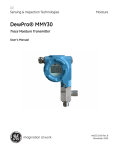
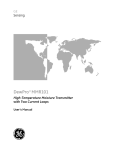
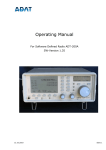


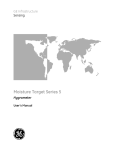

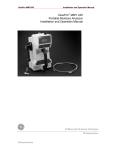
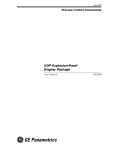
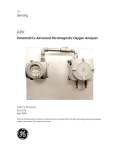
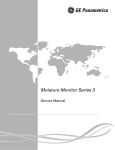
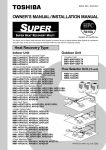
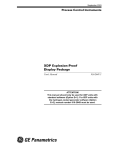

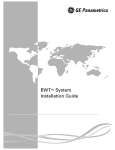
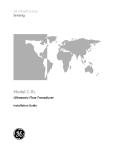
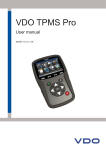
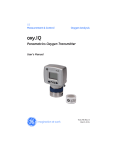

![[ANEXO N°1]](http://vs1.manualzilla.com/store/data/006302967_1-e9ecb6f804c11797b188b7143d3b1bbb-150x150.png)